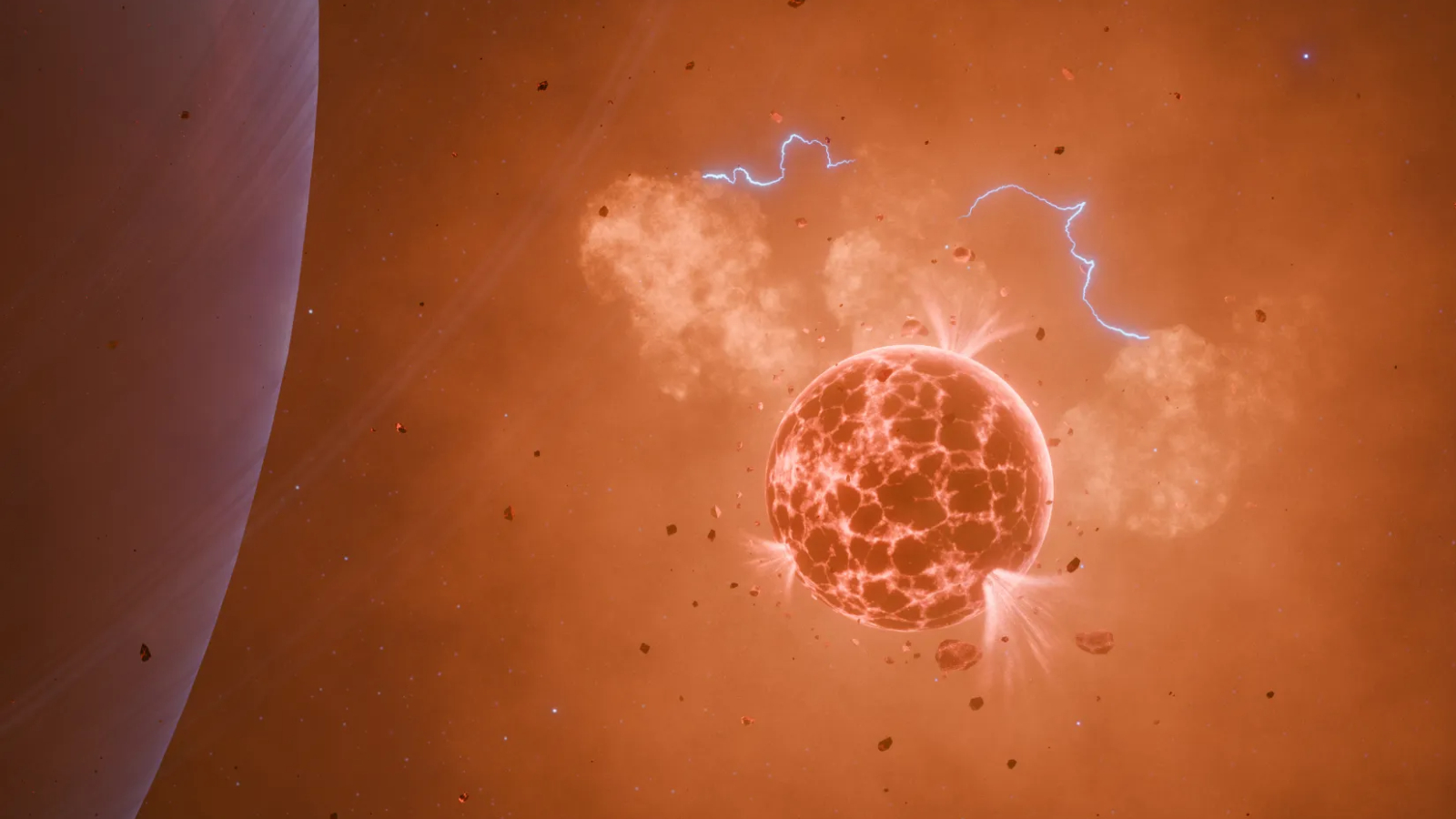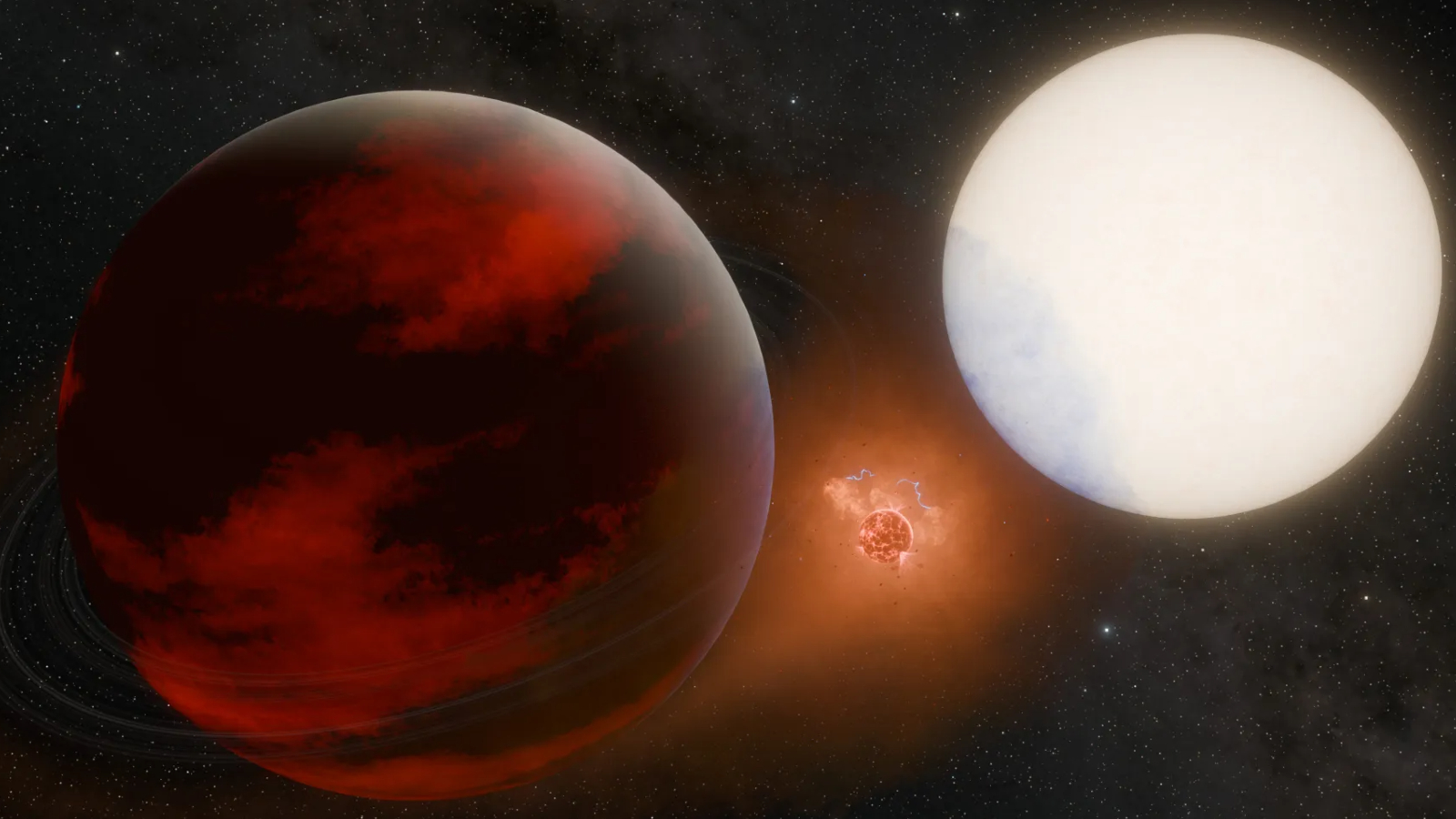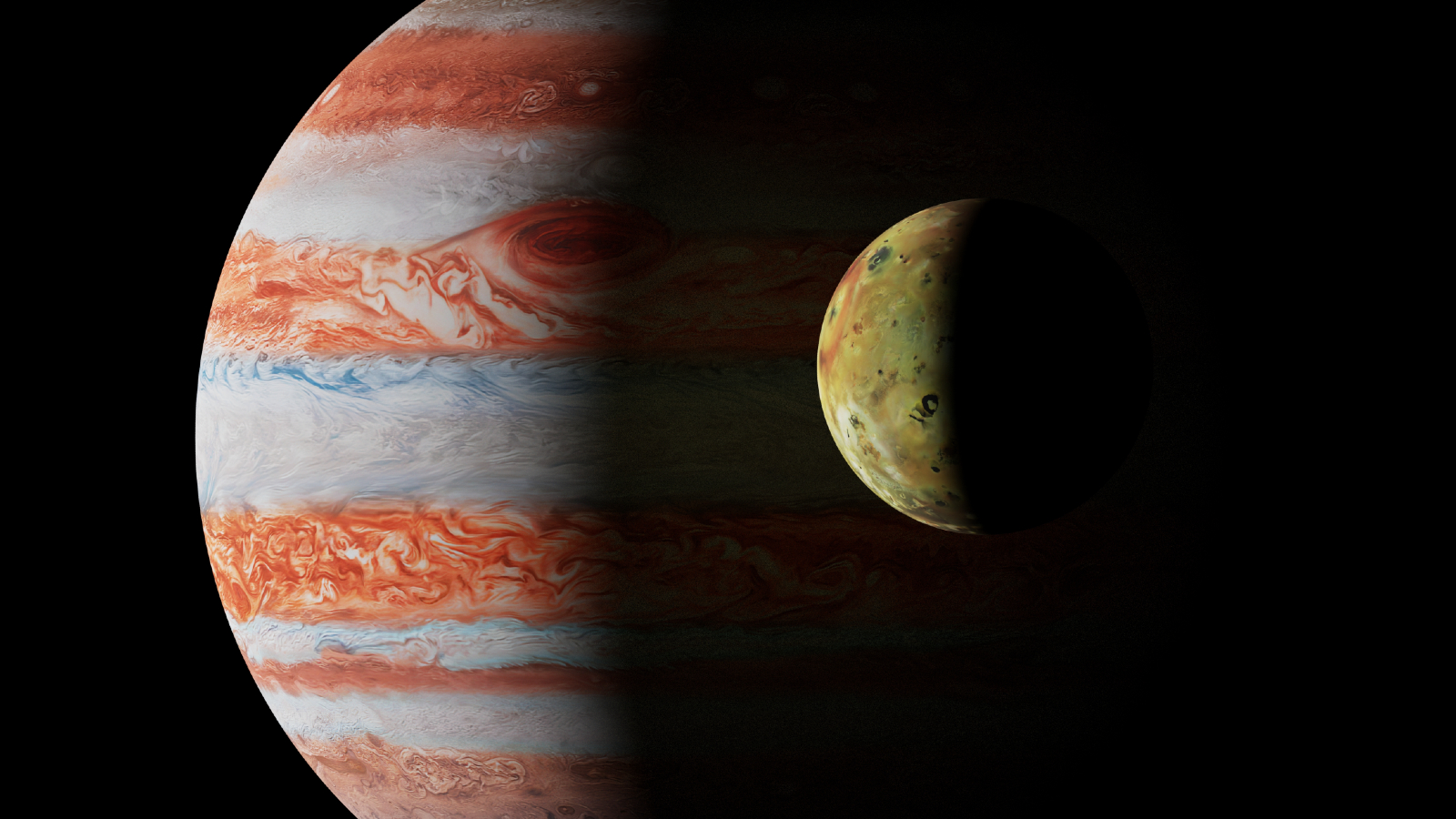
NASA scientists have uncovered new evidence of a hellish, volcanic "exomoon" orbiting a superheated alien world relatively close to Earth. The proposed satellite, which may be covered with lava, likely birthed a giant metallic cloud and could soon meet a violent end, a new study suggests.
WASP-49 b is a gas giant exoplanet that's around three times less massive than Jupiter and located 635 light-years from Earth. The alien world, which was discovered in 2012, is extremely close to its home star, orbiting it every 2.8 days, and has an average temperature of around 2,000 degrees Fahrenheit (1,100 degrees Celsius).
In 2017, scientists detected a giant cloud of sodium circling WASP-49 b. Initially, this finding puzzled researchers, because the exoplanet and its star shouldn't be able to produce this element on such a massive scale. But they later realized that the peculiar cloud might be spewing from a volcano-covered exomoon. However, further research on this has been slow-going because the sodium cloud is often obscured by the more massive objects it orbits.
In the new study, published Sept. 30 in The Astrophysical Journal Letters, scientists analyzed data collected over the past few years, revealing new information about the strange cloud.
The standout finding was that an average of 220,000 pounds (100,000 kilograms) of sodium is being injected into the cloud every second, which is far more than WASP-49 b or its star should theoretically contain, the researchers said. "The evidence is very compelling that something other than the planet and star are producing this cloud," study co-author Rosaly Lopes, a planetary geologist at NASA's Jet Propulsion Laboratory (JPL), said in a statement.
If confirmed, WASP-49 b's explosive satellite would be the first officially recognized exomoon — a moon outside our solar system — which "would be quite extraordinary," Lopes added.
Related: 'Unstable' moons may be obliterating alien life across the universe

In addition to the size of the cloud, its trajectory through space hints at its exomoon origins. The cloud is moving faster than the planet in "a way that would seem impossible unless it was being generated by another body moving independent of, and faster than, the planet," the researchers wrote in the statement.
"We think this is a really critical piece of evidence," study lead author Apurva Oza, a former JPL scientist who now works at Caltech, said in the statement. "The cloud is moving in the opposite direction that physics tells us it should be going if it were part of the planet's atmosphere."
The cloud has similar characteristics to giant plumes of sodium, potassium and sulfur dioxide found within our solar system: Jupiter's volcanic moon Io spits out such jets that can grow up to 1,000 times wider than the gas giant. "Because of Io, we know that a volcanic exomoon is possible," Lopes said.

Researchers have theorized that the exomoon orbiting WASP-49 b could be as large as Earth's moon. If this is the case, the amount of sodium being pumped out of the exomoon, combined with a squeezing effect caused by the exoplanet's gravity, will eventually obliterate the alien moon.
"If there really is a moon there, it will have a very destructive ending," Oza said.
Where are all the exomoons?
Scientists have never officially discovered an exomoon. However, they've found numerous candidates, including a series of potential exomoons dubbed "the ploonets" and a potential icy moon once thought to be an "alien megastructure."
But scientists are certain exomoons exist, because there are hundreds of moons in the solar system — meaning most star systems likely have at least one. However, to confirm these moons' existence, astronomers must watch the satellites cross in front of their host exoplanets, which is extremely challenging from such a long way away.
As a result, finding the elusive satellites is one of the current priorities for the James Webb Space Telescope.







